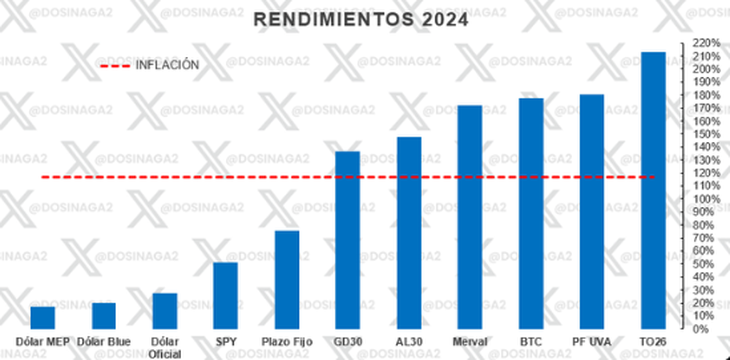This Wednesday the Central Bank (BCRA) published the Monetary Report for December. The same reflection reflects a continuity in the process of recomposition of the demand for money.
The UVA fixed terms, which were one of the investments that grew the most during 2024, suffered a monthly collapse of 15.8% in Decemberin real terms. The decline occurred within the framework of the inflation slowdown that has been observed in recent times.
The content you want to access is exclusive to subscribers.
This was reported by the Central Bank (BCRA) in it Monetary Report published this Wednesday. On the contrary, the survey indicated that fixed-rate fixed terms improved 3.3% at the end of the year, at constant prices.


While Human Persons expanded their deposits at a rate of 3.2%, while Financial Service Providers did so at 2.5% and companies at 4.9%. For their part, the demand deposits unpaid workers expanded 2.4%, while paid workers registered a real increase of 0.2%, the first in five months.
It is worth remembering that In December the BCRA reduced its monetary policy rate by three percentage points, to 32% annual nominal, equivalent to 2.7% monthly. The entity led by Santiago Bausili explained that this “responded to the liquidity conditions, the notable deceleration of the inflation rate and inflation expectations observed both in the Market Expectations Survey and in the implicit levels in the secondary market of securities, along with the strengthening of fiscal and exchange anchors”.
According to INDEC, the Consumer Price Index (CPI) It has been decelerating steadily since August. Between said month and November fell from 4.2% monthly to 2.4%.
image.png

In this framework, the UVA fixed terms, which are indexed to inflation and offer a slight additional return, lost attractiveness, although in the accumulated 2024, finance specialist Daniel Osinaga assured that said investment presented a nominal jump of 180%, higher than inflation estimated at 120%. This has largely to do with the fact that the returns of this instrument have a lag of a few months, which is whyThey experienced months of strong inflationary acceleration, such as December 2023, for example.when prices rose 25% after the devaluation.
Driven by traditional fixed terms, the BCRA report reflected that the demand for money (M3, which in addition to deposits in pesos from the non-financial private sector includes currency held by the public) increased 3.7%. “In 2024 the demand for money fell to reach historic lows. Private M3 reached a minimum of 11.4% of GDP in April and began to grow since then in real terms“, the Central deepened.
Source: Ambito
I am Pierce Boyd, a driven and ambitious professional working in the news industry. I have been writing for 24 Hours Worlds for over five years, specializing in sports section coverage. During my tenure at the publication, I have built an impressive portfolio of articles that has earned me a reputation as an experienced journalist and content creator.




